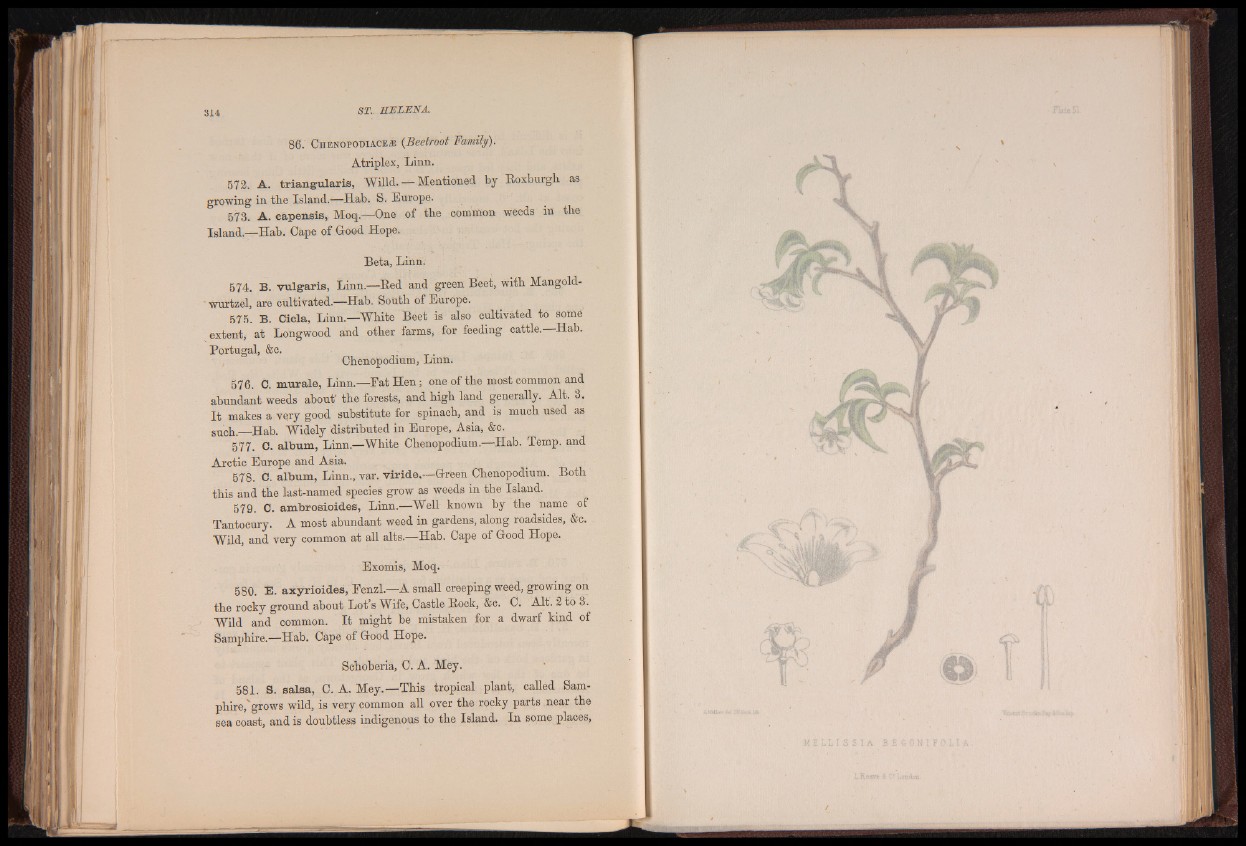
3X4 ST.. HELENA.
8 6 . C h e n o p o d i a c e ® ( Beetroot Family).
Atriplex, Linn.
572. A. trian g u la ris, Willd.— Mentioned by Roxburgh as
growing in tlie Island.—Sab. S. Europe.
578. A. capensis, Moq.—One of the common weeds in the
Islan d—Hab. Cape of Good Hope.
Beta, Linn,
574. B. vulgaris, Linn.—Red and green Beet, with Mangold-
' wurtzel, are cultivated.—Hab. South of Europe.
575. B. Cicla, Linn.—White Beet is also cultivated to some
extent, at Longwood and other farms, for feeding cattle. Hab.
Portugal, &c. . .
Chenopodium, Linn.
576. C. murale, Linn.—Pat H e n ; one of the most eommon and
abundant weeds about the forests, and high land generally. Alt. 3.
I t makes a very good substitute for spinach, and is much used as
such. Hab. Widely distributed in Europe, Asia, &c.
577. C. album, Linn.—White Chenopodium—Hab. Temp, and
Arctic Europe and Asia.
578. C. album, Linn., var. viride.—Green Chenopodium. Both
this and the last-named species grow as weeds in the Island.
579. C. ambrosioides, Linn.—Well known by the name of
Tantocury. A most abundant weed in gardens, along roadsides, &c.
Wild, and very common at all alts.—Hab. Cape of Good Hope.
Exomis, Moq.
580. E. axyrioides, Penzl.—A small creeping weed, growing on
the rocky ground about Lot’s Wife, Castle Rock, &c. C. Alt. 2 to 8.
Wild and common. I t might be mistaken for a dwarf kind of
Samphire.—Hab. Cape of Good Hope.
Schoberia, C. A. Mey.
581. S. salsa, C. A. Mey.—This tropical plant, called Samphire,'
grows wild, is very common all over the rocky parts near the
sea coast, and is doubtless indigenous to the Island. In some places,